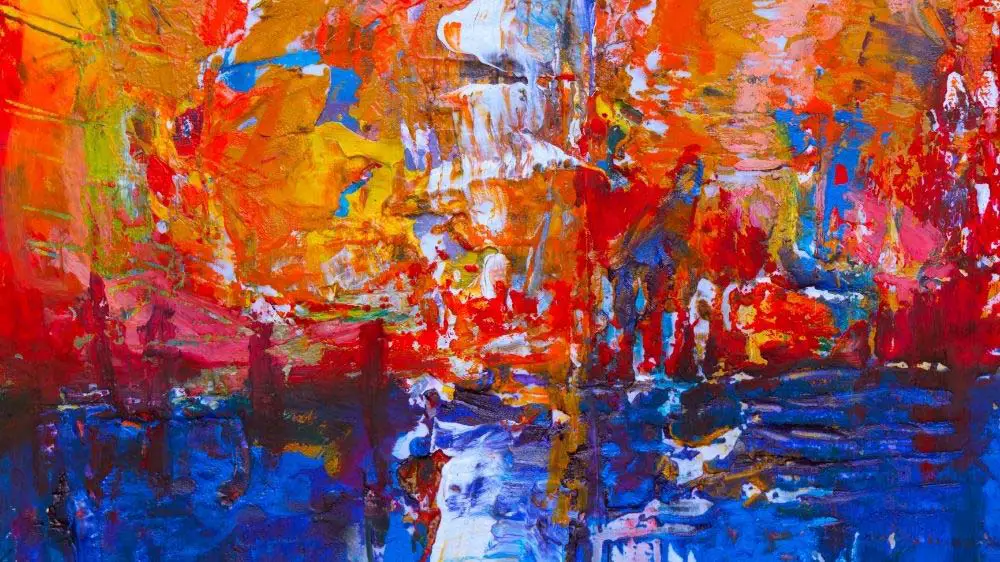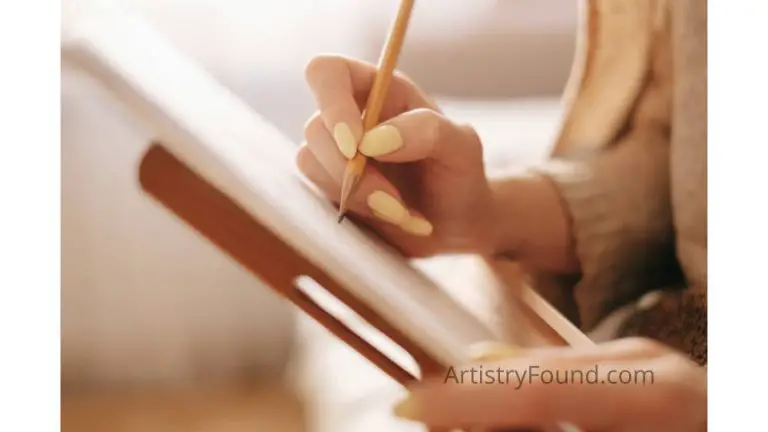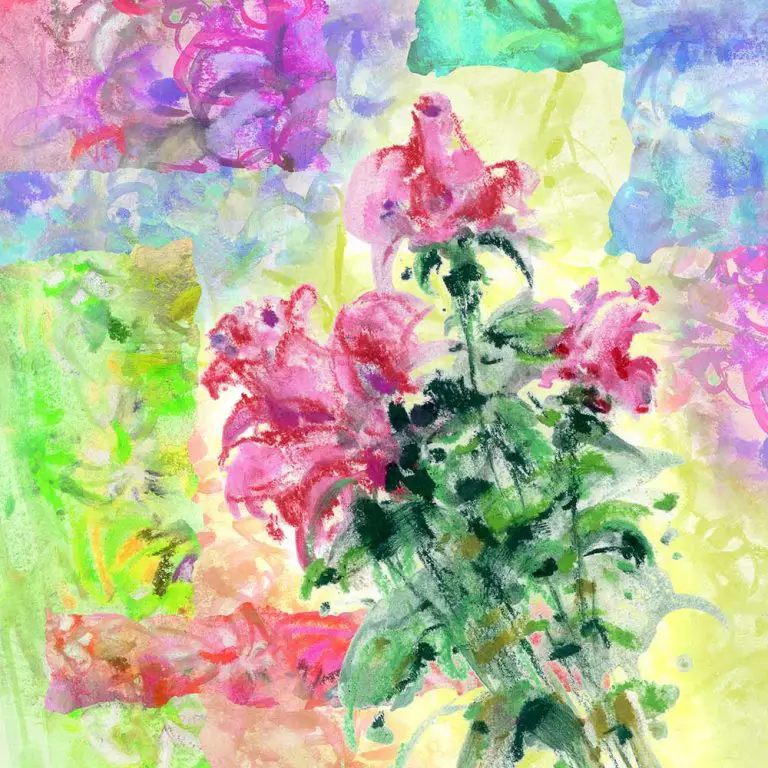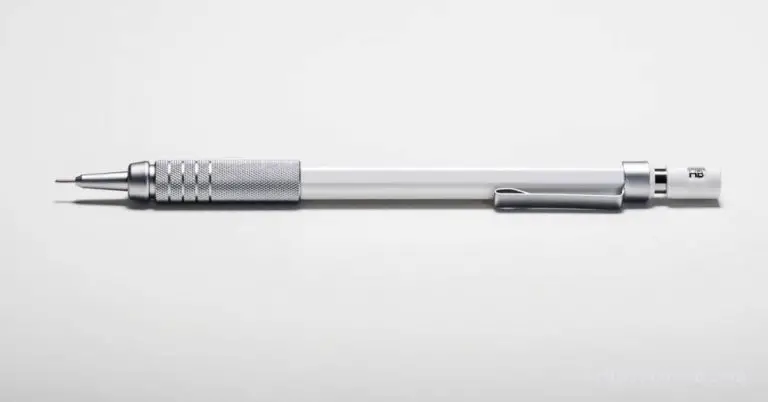Can I Be an Artist If I Can’t Draw? (Art Without Drawing)
We humans have been using drawings to communicate and express ourselves artistically for thousands of years. In fact, drawing is often the first skill people think of when they consider becoming an artist. But what about those of us who show no talent as an illustrator? Can you be an artist if you can’t draw?
Being able to draw is not essential for becoming an artist. In the art world, drawing does not always have to be realistic; many revered artists created masterpieces with somewhat questionable drawing skills. Additionally, art forms such as painting, sculpture, and photography do not require drawing skills at all.
Read on to learn why skillful drawing isn’t necessary to be an artist and how you can create impactfully, thought-provoking, and meaningful art entirely without this ability.

(This article may contain affiliate links and I may earn a commission if you make a purchase)
Why You Don’t Need to Draw to be an Artist
It is a sad misconception that the ability to draw is essential to being a successful professional artist. This ideology is so damaging that it has driven many talented individuals away despite their passion for making art. To anyone reading this and questioning if they can be an artist without the ability to draw, you can do it, and here’s why.
Good & Bad Art is Subjective
Before we get too deep into this stance that you don’t need to draw to be an artist, we need to state loud and proud that art and what people consider “good” or “bad” art is entirely subjective. This point is absolutely vital to the art sphere and is the root of a great deal of debate regarding art, particularly when comparing works of art across the ages.
There is certainly a myriad of elements in art that sets one piece apart from another. Elements such as:
- Technique
- Use of color
- Shadowing and shading
- Texture
- Shape
- Portrayal of emotion
And these elements are just the beginning. So many facets of art can play on human emotion and render one person positively entranced by a painting, pencil drawing, or sketch, and leave another completely disinterested.
While there are certainly experts in the field that can describe why a piece is worthy of awe and respect, they can’t instill an emotional reaction into viewers upon seeing the work.
The most artistically uneducated person can look at a piece of art and have a visceral reaction and have no idea why. And even if they did, it is highly unlikely their response would be, “It’s drawn well.” Their explanation will most likely pertain to how the work makes them feel or what they appreciate about it.
Can technical training and skill in drawing help you with art? Absolutely. But just because you can’t draw something “well” does not mean you can’t create art from it.
Art Doesn’t Require Hyperrealism
Another misconception about art is that someone is only skilled at drawing if they can create something realistic or immediately identifiable. Although art is subjective, many people put hyper-realistic art at the pinnacle of artistry when it comes to skill and technique.
Now, don’t get me wrong, hyperrealism is an incredibly daunting and challenging art form that can inspire some of the most impressive and profound works.
If you’ve never seen work by Chinese artist Leng Jun, you would be absolutely astounded by the sheer attention to detail and immense artistic talent that allows him to create hyper-realistic portraits of women on a masterful level.
The Starry Night – Famous Art Without Realistic Drawing
Jun’s 2011 “Portrait of the Face – Xiaojiang” has been regarded as one of the most realistic paintings ever created and is supported by countless other works such as “Portrait of the Face – Xiaowen” and “Mona Lisa – The Design of Smile” that anyone would immediately mistake for a photograph at first glance.
These works clearly demonstrate why hyperrealism deserves every ounce of credit it receives, but let’s compare them to another famous work of art that leans on the side of fantasy over realism: Vincent van Gogh’s “The Starry Night.”
“The Starry Night” is one of Van Gogh’s most famous works, and yet, this painting’s masterful portrayal isn’t typically accredited to how it is drawn. In fact, one could argue there is very minimal drawing involved in the piece.
“The Starry Night” is famed for its use of color to depict movement, dimension, and an over whimsical and dreamlike scene. The element that demonstrates skilled drawing best would be the houses, which are hardly central to the piece’s impact.
Ultimately, nothing here is drawn to perfection with the intent of realism. Even the crescent moon is drawn unevenly, but in the end, this is entirely irrelevant because art doesn’t revolve around how well something is drawn. There are few elements in this painting that demonstrate drawing prowess, and yet, it is one of the most famous works of art in the world.
Not All Art Requires High Level Drawing Skills
Roy Simmons once said, “most artists can’t draw,” to which Seth Godin responded, “but all artists can see.” Artistic vision is far more important than the ability to draw. If you can’t draw what you envision, find another medium that allows you to express it fully.
Hanoch Piven is known worldwide as “the artist who doesn’t know how to draw.” His work is often comical and cartoonish, as he uses objects, most often food, to create distinguishable images that easily evoke a humored reaction.
After all, who wouldn’t smirk at a portrait of Albert Einstein made almost entirely of fruits and vegetables or a portrait of Homer Simpson complete with a trash can mouth and donuts eyes?
Looking at these pieces, you’d see that there is absolutely no drawing prowess present, and yet, they are impactful and innovative works of art.
Another example of artistry devoid of drawing skill is work by Piet Mondrian, a Dutch painter who pioneered 20th-century abstract art. Rather than featuring skillful drawing, Mondrian’s work is known for incorporating simple geometric elements.
Much of Mondrian’s art follows De Stijl compositions where the only subject matter is created from vertical or horizontal lines and limited to black and white or primary colors. This is an example of a style where drawing is essentially unnecessary. It is also one reason this style is so controversial because you could argue anyone with a ruler could fill a page with squares and color some in.
Regardless of this argument, Piet Mondrian is regarded as one of the greatest artists of the 20th century and achieved this title without demonstrating advanced drawing techniques.
Drawing is One of Many Technical Skills
Another reason why drawing isn’t the be all end all of an artist is that, ultimately, drawing is a technical skill. More than that, there are several different types of drawing, and it, too, in a way, can be subjective.
Each kind of drawing is unique and requires its own element of practice and technique to accomplish “successfully.” Some examples include:
- Illustration Drawing
- Life Drawing
- Emotive Drawing
- Analytic Drawing
- Perspective Drawing
- Diagrammatic Drawing
- Geometric Drawing
No one kind of drawing is inherently better than the other, but this demonstrates that the term “drawing” can be much more intricate than others presume. If you define drawing as using a pencil or other writing utensil to create shapes, then arguably anyone could draw.
However, if you argue that “good drawing” means creating distinguishable imagery, then I suggest you refer to work by Joan Miró, who is esteemed for his innovative and unique style of surrealism.
Although there is certainly drawing in Miró’s work, most wouldn’t necessarily define it as “good” or “skillful” drawing. This doesn’t change the fact that his work is distinctive and thought-provoking, even if that thought is “what is that?”
Another example of how drawing can be subjective is work by Paul Klee. If you look at Klee’s “Portrait of a Yellow Man,” you’ll see that he drew this image and then painted it with watercolor, and yet, it isn’t drawn in a manner most would expect from a portrait. That is why it is unique.
Klee’s drawing style is based on the drawings of children, and therefore, it has an essence of whimsy and innocence juxtaposed with an element of chaotic darkness. Just because this image isn’t drawn realistically doesn’t mean it lacks skill.
In fact, Klee’s work is renowned for his masterful and intricate incorporation of geometric shapes and color to bring an image together in an unthinkable manner that leaves you constantly wondering how he managed to make it work.
The overall point to take from here is that you might think you can’t draw because your attempts don’t conform to outside expectations of what skillful drawing should look like. However, artists like Miró and Klee demonstrate that drawing is essentially a tool that artists use to express themselves in their work. It doesn’t have to be clean or realistic or even identifiable as long as it is used to convey emotion and an impactful artistic vision.
How To Become An Artist Without Drawing
I’ve detailed why drawing is not essential to become an artist, as evidenced by some of history’s most renowned artists achieving this status with works that reflect limited drawing or complete lack thereof.
We’ve even gone as far as to touch on the subject of why it is potentially impossible that someone “can’t” draw. Drawing is ultimately a technical skill and tool that you can utilize as you please and doesn’t have to conform to popular ideologies of what kinds of drawing are “good” or “bad” in the realm of art.
Of course, if you are adamant that drawing isn’t for you, but you still want to devote yourself to an artist’s life, there are ways you can do this without ever drawing a single line.
Choose Object Mediums to Create Imagery
If you prefer not to draw, try using objects to create imagery instead. There are countless artists who use one physical object or medium to create intricate, detailed, and impressive art without ever touching a writing utensil.
In Native American culture, most notably the Navajo people, sand is used to create sand paintings or dry paintings as a ceremonial art. There’s also a vast history of art created from paper cutting seen in Chinese Jianzhi, German Scherenschnitte, Indian Sanjhi, and many more.
Ultimately, you can create art using any kind of object that you desire. Artist Chris Soal created his piece, ‘Kids see ghosts sometimes’ entirely out of toothpicks in polyurethane sealant, and successful artist Mary Ellen Croteau created a self-portrait using more than 7,000 plastic bottle caps. These are just two out of countless artists that have used unique mediums to create their work.
Playing with the shape, texture, and color of objects is a fantastic way to explore your own artistic style using a medium that makes you unique.
Pursue the Life of a Painter
Painting is another art form that often relies on at least a moderate level of drawing skill. However, as demonstrated previously, you can absolutely become a profound painter without drawing.
Many of our previous examples of great works with minimal to no drawing are paintings. Some painters won’t draw at all to map out their vision; they just go straight for the paintbrush and paints.

Quite a few painting styles would be perfect for individuals that don’t or “can’t” draw, such as:
- Impressionism: A famous artist example would be Claude Monet.
- Abstract art: Jackson Pollock’s “Full Fathom Five,” 1947 is a fantastic piece of abstract art.
- Expressionism: Dance Around the Golden Calf (1910) by Emil Nolde portrays this well.
- Surrealism: This emphasizes drawing a bit more, but you can experiment as much as you like. Just look at Andre Masson’s “Battle of Fishes.”
In addition to these styles, there are quite a few techniques you can master that, again, require little to no drawing. Some of these techniques actually aren’t conducive to drawing, as it would go completely against its principles.
If you’ve ever seen pointillism work by Georges Seurat, you’ll understand what we mean by techniques that don’t allow for drawing. You can’t really draw anything when creating a pointillism piece because the technique uses small, distinct dots of color applied in patterns to create an image.
Shapes, outlines and details are all created with tiny dots of color, not by drawing them in. The same concept is seen in divisionism, which many would recognize, again, in work by our friend Van Gogh.
Another example of an art technique devoid of drawing is impasto painting. To achieve this, artists lay down thick layers of paint to create highly textured and nearly 3-dimensional art. Some impasto pieces are created entirely with thick layers of paint, as seen in Pie Fries’ work, and others use impasto in lighter amounts to provide depth and emphasis, a technique present in many Rembrandt paintings.
If these styles and techniques aren’t enough, certain painting mediums, such as watercolor, will allow you to create art without fussing over the fine details of the drawing. Here, you use the flow and dilution of the paint to create masterpieces rather than outlining and penciling in detail.
Explore an Artform That Doesn’t Require Drawing
When it comes to the world of visual art, drawing is only one of the seven forms you can pursue. In addition to drawing, or even painting, other pursuable visual arts include:
- Architecture
- Ceramics
- Filmmaking
- Photography (I can barely draw a stick figure. That’s why I became a photographer.)
- Sculpting
Each one of these visual arts provides the opportunity for expression without the technical skill of drawing. Some, such as painting and architecture, can certainly be boosted by talented drawing, but they are not required.
A lot of architectural work is done primarily through drawings before construction, but if you prefer to explore this art without drawing, you can create architectural models out of countless materials and produce the same effect.
Model making is a form of art that can be achieved with physical objects, or you can incorporate technology to create a virtual model. Some individuals have even opted for 3D modelling or printing.
Ceramics and sculpting can almost go hand in hand. Each requires you to shape and mold a physical material to create something you deem to be art. Some could perhaps argue that elements of drawing are required in painting and especially architecture, but there is no doubt that drawing has no place here. Unless you are decorating your sculptures or ceramics, there is no reason you need to draw to be skilled at these art forms.
We probably don’t need to detail why drawing is unnecessary to create films. Although films are certainly a form of artistry, it’s probably not the first one that comes to mind as an alternative if you are uncertain of your drawing abilities. However, film and photography are great ways to use the world around you to create art.
These forms of art rely more on technology and editing skills than anything else. In terms of film, it is highly unlikely you’ll ever feel the need to draw.
Many individuals will incorporate drawing skills when editing photographs, especially if they are gifted with Photoshop or create digital art. However, it is by no means necessary. Some of the most impactful photographs are created with quality equipment, creativity, an artistic vision, and varying use of digital tools.
Final Thoughts
If you’re an artistically inclined individual that wants to pursue your passions without the technical skill of drawing, you’ll be pleased to know there are a plethora of options for you.
Remember that in the end, art is entirely subjective and what really matters is how well you express yourself. Technique and training are certainly important, but without passion and emotion, a piece that is perfect in technique will fall flat.
Of course, if you’re truly dismayed by your lack of drawing abilities, investing in some online drawing classes or even watching tutorials on YouTube can make a world of difference in practicing and developing this skill. Although it is by no means essential, you might find that even moderate training in drawing can increase your artistic skill and boost your art to another level.








